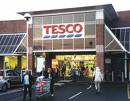Supply Chain Impact
The advance in small store formats will have important supply chain impacts for both retailers and consumer packaged goods manufacturers. Traditional approaches that minimize traditional logistics costs may be significantly altered to increase supply chain velocity, ease of material handling, and rapid, frequent replenishment.
The ability of a consumer goods vendor to support this format is not only important to minimize total supply chain costs, but because top line revenue is in-lay as well. The smaller store footprint means only a fraction of the SKUs handled in a traditional grocery store can be carried in the express grocery format.
 As Tesco has shown in the UK, the smaller stores will try to use “one-touch merchandising” whenever possible, such as floor-ready pallets for dry goods, and recyclable plastic containers in the product area, for example. As Tesco has shown in the UK, the smaller stores will try to use “one-touch merchandising” whenever possible, such as floor-ready pallets for dry goods, and recyclable plastic containers in the product area, for example.
“There will be an interesting set of trade offs going on here,” said Jim Tompkins, president of Tompkins Associates. “Think about it. Customer Satisfaction drives the retailer towards a full range of SKU's, frequent deliveries and low cost. When real estate gets expensive, we want to go with smaller store formats. "Green" concerns say we want fewer deliveries and less road congestion. Merchants want more frequent deliveries of small quantities of larger number of SKU's while doing more with store customization to local customer requirements. And Distribution says they want to flow through full cases with fewer deliveries of a reduced number of SKU's.”
Tompkins says we can expect to see the following:
- Flow through of full cases at the retail DC is a best practice and will continue to grow.
- Consumer product firms will be pushed to smaller case sizes to accommodate full case flow through to smaller stores.
- There will be reduced SKU offerings at smaller stores, while the stores become more customized for local customer requirements.
- Store delivery frequency will not significantly change. There will be lots of discussion on more store deliveries and fewer store deliveries, but there will not be a significant change from today. Once we get into mandates from local communities restricting deliveries, the frequency will remain mostly unchanged, but will move to off hour deliveries.
Flow through at case level should drive more UCC-128 carton labeling and eventually RFID at the carton label, in addition to case level advance ship notices.
Smaller case sizes would marginally increase logistics cost per carton/unit, depending on the amount of reduction. Ditto for the need to build many more mixed SKU pallets than we have today. We may also see requests for “aisle ready” pallets built in store shelf sequence.
The scope of the impact will obviously depend on how well the format takes off for both Tesco and other retailers.
“We’re already seeing how Tesco is changing business relationships and supply practices,” adds Willard Bishop. “They are creating subsidiaries in the US to support their very different business model, which leverages a closed-loop distribution system and vertical integration wherever possible. They have established tough margin expectations for suppliers, forcing some of them to walk away from the table.”
Do you agree or disagree? Share your perspective by emailing us at feedback@scdigest.com |